 Charlene Peters Charlene Peters |
Tourism spaces increasingly focused on wellness, food and wine present an opportunity to create a cost-effective communications strategy for clients. The idea is to collaborate with various partners to establish an all-encompassing, “work hard, play hard” travel experience. Identifying a brand’s core meaning and personality will ultimately facilitate a better communications strategy and lead to an understanding of which grouped markets can make one emotional connection.
To shift the focus from promoting a luxury hotel or resort, for example, solely as a place to rest your head — and possibly dine in the on-site restaurant — it’s important to build relationships with nearby wine destinations, spas or craft brewery tasting trails, to name a few options. These are but a few methods to utilize the concept of cluster branding.
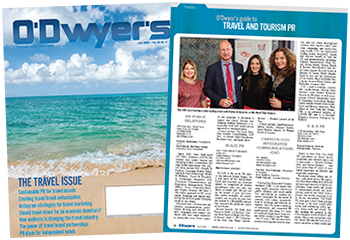 |
| This article is featured in O'Dwyer's Jul. '19 Travel & Int'l PR Magazine. |
Instead of competing for media space, cluster branding forms a powerful relationship for businesses to collaborate, rather than viewing their neighbors as competitors. Simultaneously, journalists are better able to gather enough story research for multiple outlets across several categories. For example, one itinerary that spans wellness and luxury could result in a story that is published in a general travel/lifestyle magazine, as well as in a spa magazine, and as an article for a luxury publication — which might also have an architectural focus. Beyond print, the possibilities are endless for niche blogs and social media posts/stories. Going one step further, a brand ambassador can be utilized for extended coverage of one product that executes integrative marketing initiatives across multiple channels.
Take, for instance, Facebook and Instagram, two platforms with the capability to promote the highlights of your daily life in full intensification — without full disclosure. One might say that each Facebook and Instagram user is creating his/her own personal brand. It’s up to the communications professional to utilize this personal brand to promote several businesses during one visit.
Gathering interest and building the framework for business clusters presents its own set of challenges, such as approval from decision-makers and organization of committees to oversee management of efforts. These challenges are worth the effort, however, as the end game is to present a more cost-effective way for a client to reach out to target audiences, increase visibility for participating businesses and focus on messaging for the destination’s overall story. The goal is to become carriers of a brand and its values, utilizing the brand as a managerial tool and building an authentic network.
The best strategy for a communications team is to establish relationships with the audiences of a brand and its regional businesses that potentially add value, and then figure out each one’s differentiation and relevance that will ultimately attribute to overall brand strength and vitality. A PR-driven strategy might include representation of a resort to offer a package that includes guided morning hikes — if there’s a hiking trail nearby — forest bathing, the incorporation of an outside source for beach yoga — if the resort is oceanfront — a morning hike to the bottom of a volcano for detoxifying mud immersion and hot springs soak, or the use of on-site bikes for a ride to cooking classes that focus on an indigenous ingredient or signature dish of the destination.
The idea to “detox before you retox” is a concept gaining speed in the wellness-and-wine travel sector, as most travelers look forward to indulging in the food and wine scene at a destination but may be hesitant due to the foreseeable weight gain. How many times have you heard someone complain they’ve eaten too much during their vacation? When activity comes first, indulgence is the reward, and guests are more likely to have a positive experience to share with friends, colleagues and extended family when they return home relaxed and rejuvenated.
For instance, wellness travelers are happiest when they begin the day with meditation or yoga, and then take a healthy cooking glass or juice class before embarking on a tour and ending with an indulgent wine-pairing dinner. Or perhaps a morning bike ride on a trail leading to stops at micro-breweries for tastings, followed by a reflexology massage or dip in a hot springs pool—if applicable—would best serve an audience on multiple levels. A hotel or resort could gain more exposure by diversifying and offering packages that incorporate regional businesses, such as guided hikes or a collaboration with an adventure activity company.
With the diversification of the lodging industry and new brands born daily, competition to differentiate is crucial. To face the challenges of incorporating stakeholders, a communications agency or professional may want to create the desire for businesses to participate in a cluster business event like a passport marketing program or itinerary package presented on each business’ website and marketing collateral.
Co-authors Marcus Andersson, Adrian Solitander and Per Ekman of Tendensor published “Cluster Branding and Marketing — A Handbook on Cluster Brand Management,” and offer the following advice for PR:
- “Think about how PR activities can support the overall reputation of the cluster, as well as drive exposure around certain specific issues.
- Dare to have an opinion and take a stance.
- Consume lots of media to understand where the winds are blowing.
- Think about how you can find common ground and push an agenda jointly with other ‘influencers.’”
In the end, the brand is well-regarded, and consumers — as well as stakeholders — gain an intimate understanding regarding what’s offered. For the communications professional or agency, the contract becomes larger when a brand collaborates with regional businesses. This means an increase in budget dollars and ability to attract A-list journalists and micro-influencers. The result is trackable in key performance indicators: increased press coverage with multiple story angles, as well as comprehensive social media stories and posts. Building interest within various aspects of a destination and branding as a cluster is sure to enhance a communication professional or agency’s notable reputation in the tourism space.
***
Charlene Peters is Managing Partner at Hemsworth Communications.


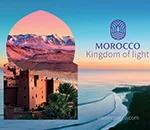 Weber Shandwick is providing PR and marketing communications services to the Moroccan National Tourist Office in New York.
Weber Shandwick is providing PR and marketing communications services to the Moroccan National Tourist Office in New York.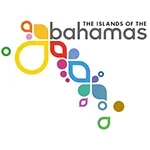 Finn Partners has filed its six-month contract with the Bahamas Ministry of Tourism, Investments & Aviation, which is worth $240K.
Finn Partners has filed its six-month contract with the Bahamas Ministry of Tourism, Investments & Aviation, which is worth $240K.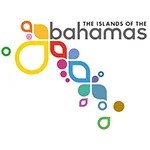 Weber Shandwick wrapped up its work for the Ministry of Bahamas at the end of 2023.
Weber Shandwick wrapped up its work for the Ministry of Bahamas at the end of 2023.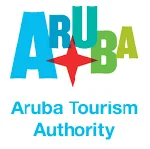 The Aruba Tourism Authority is boosting its budget 29.4 percent to $2.2M at Zeno Group, according to its 2024 contract, effective Jan. 1.
The Aruba Tourism Authority is boosting its budget 29.4 percent to $2.2M at Zeno Group, according to its 2024 contract, effective Jan. 1. As inflation continues to impact spending, consumers are revisiting their list of what they’re willing to spend more of their money on. Luckily for those in the travel industry, experiences seem to be trending up on the “splurge” list.
As inflation continues to impact spending, consumers are revisiting their list of what they’re willing to spend more of their money on. Luckily for those in the travel industry, experiences seem to be trending up on the “splurge” list. 


 Have a comment? Send it to
Have a comment? Send it to 
No comments have been submitted for this story yet.